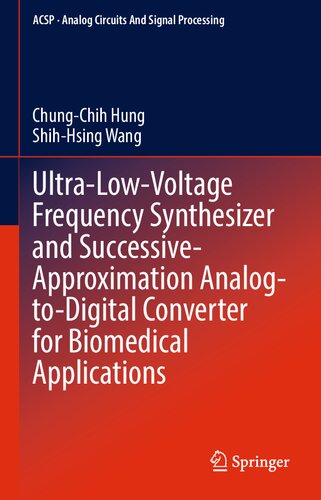

Most ebook files are in PDF format, so you can easily read them using various software such as Foxit Reader or directly on the Google Chrome browser.
Some ebook files are released by publishers in other formats such as .awz, .mobi, .epub, .fb2, etc. You may need to install specific software to read these formats on mobile/PC, such as Calibre.
Please read the tutorial at this link. https://ebooknice.com/page/post?id=faq
We offer FREE conversion to the popular formats you request; however, this may take some time. Therefore, right after payment, please email us, and we will try to provide the service as quickly as possible.
For some exceptional file formats or broken links (if any), please refrain from opening any disputes. Instead, email us first, and we will try to assist within a maximum of 6 hours.
EbookNice Team

Status:
Available5.0
37 reviewsThis book introduces the origin of biomedical signals and the operating principles behind them and introduces the characteristics of common biomedical signals for subsequent signal measurement and judgment. Since biomedical signals are captured by wearable devices, sensor devices, or implanted devices, these devices are all battery-powered to maintain long working time. We hope to reduce their power consumption to extend service life, especially for implantable devices, because battery replacement can only be done through surgery. Therefore, we must understand how to design low-power integrated circuits.
Both implantable and in-vitro medical signal detectors require two basic components to collect and transmit biomedical signals: an analog-to-digital converter and a frequency synthesizer because these measured biomedical signals are wirelessly transmitted to the relevant receiving unit. The core unit of wireless transmission is the frequency synthesizer, which provides a wide frequency range and stable frequency to demonstrate the quality and performance of the wireless transmitter. Therefore, the basic operating principle and model of the frequency synthesizer are introduced. We also show design examples and measurement results of a low-power low-voltage integer-N frequency synthesizer for biomedical applications. The detection of biomedical signals needs to be converted into digital signals by an analog-to-digital converter to facilitate subsequent signal processing and recognition. Therefore, the operating principle of the analog-to-digital converter is introduced. We also show implementation examples and measurement results of low-power low-voltage analog-to-digital converters for biomedical applications.